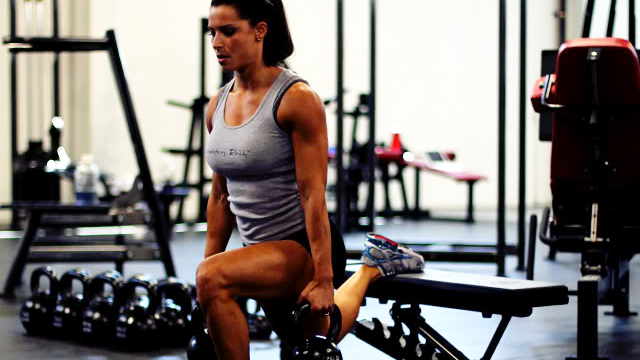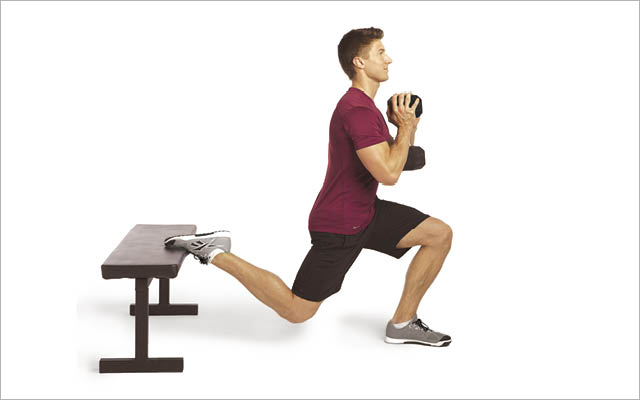Bulgarian Split Squat Benefits
The Bulgarian split squat has surged in popularity in recent years, becoming a staple in leg day routines for athletes, bodybuilders, and fitness enthusiasts alike.
This single-leg exercise is highly effective for building strength, enhancing balance, and improving overall athletic performance.
But what makes it so special? Can it truly build muscle mass? And how does it compare to traditional lunges? In this article, we’ll take an in-depth look at the Bulgarian split squat and its benefits.
What is the Bulgarian Split Squat Good For?
The Bulgarian split squat is a unilateral lower-body exercise where one foot is elevated behind you on a bench or platform while you perform a squat on the front leg.
This setup creates a unique combination of stability challenge, strength development, and flexibility enhancement. Here are some of the primary benefits:
Strength and Muscle Development The Bulgarian split squat targets the quadriceps, hamstrings, and glutes while also engaging the core for stability.
Because it isolates one leg at a time, it helps address muscle imbalances that might be overlooked in bilateral movements like squats and leg presses.
Enhanced Balance and Coordination The unilateral nature of the exercise forces your stabilizer muscles to work harder, improving overall balance and coordination.
This is particularly beneficial for athletes who need agility and stability in sports that involve running, jumping, and lateral movements.
Reduced Lower Back Strain Traditional barbell squats can put significant pressure on the lower back, especially when performed with heavy weights.
The Bulgarian split squat allows for lower loads while still providing an intense workout, making it a great option for those with back issues or those looking to avoid unnecessary spinal stress.
Greater Range of Motion and Flexibility Since one foot is elevated, you can achieve a deeper squat compared to a traditional lunge, which enhances flexibility in the hip flexors and allows for greater activation of the working leg’s muscles.
This increased range of motion helps improve mobility, which is crucial for both athletic performance and everyday movement.
Injury Prevention and Rehabilitation By strengthening stabilizer muscles and improving balance, the Bulgarian split squat can help prevent injuries, particularly in the knees and hips. It’s also commonly used in rehab programs to rebuild strength after an injury without overloading the joints.

Why are Bulgarian Split Squats So Popular?
The rise in popularity of Bulgarian split squats can be attributed to their effectiveness and versatility.
Unlike traditional squats, which require significant weight to build strength, Bulgarian split squats can deliver a challenging workout with just body weight or minimal resistance.
This makes them accessible to a wide range of fitness levels, from beginners to elite athletes.
Additionally, social media and the rise of functional fitness have played a role in popularizing this exercise.
Fitness influencers and strength coaches frequently showcase Bulgarian split squats as a go-to movement for leg development, further cementing their status as a must-do lower-body exercise.
Another reason for their popularity is the increasing emphasis on unilateral training. More coaches and trainers recognize the importance of addressing muscle imbalances, improving joint stability, and incorporating functional movements into training programs.
Since Bulgarian split squats effectively check all these boxes, they have naturally gained widespread appeal.
Will Bulgarian Split Squats Build Mass?
One of the biggest questions surrounding Bulgarian split squats is whether they are effective for building muscle mass. The short answer: absolutely!
Muscle hypertrophy, or growth, occurs when muscles are placed under significant stress, leading to microtears that repair and grow back stronger.
Bulgarian split squats provide ample tension, particularly when performed with added weight, such as dumbbells or a barbell.
Here’s why they are effective for building mass:
High Muscle Activation – Studies show that Bulgarian split squats activate the quadriceps and glutes to a similar extent as traditional squats. Because you’re focusing on one leg at a time, the working muscles experience greater fatigue, which can contribute to muscle growth.
Progressive Overload – Like any strength training exercise, you can progressively overload Bulgarian split squats by increasing resistance, performing more reps, or adding tempo variations (such as slow descents or pauses at the bottom of the movement).
Time Under Tension – The increased range of motion allows for greater time under tension, a key factor in hypertrophy. Slowing down the eccentric (lowering) phase can further enhance muscle-building benefits.
Comprehensive Leg Development – Bulgarian split squats don’t just hit the quads; they engage the hamstrings and glutes, making them a well-rounded lower-body mass-building exercise.
While Bulgarian split squats can certainly build mass, it’s essential to incorporate them as part of a balanced leg-training program.
Combining them with bilateral movements like squats, deadlifts, and leg presses will yield the best muscle-building results.

Split Squats vs. Lunges: Which is Better?
Both Bulgarian split squats and lunges are excellent lower-body exercises, but they have distinct differences. Which one is “better” depends on your goals and individual needs.
Bulgarian Split Squats:
- Greater Stability Challenge – With one foot elevated, Bulgarian split squats require more balance and coordination.
- More Range of Motion – The deeper squat position leads to greater stretch and activation of the glutes and quads.
- Less Spinal Load – Since you typically use less weight compared to barbell squats, there’s reduced stress on the lower back.
- More Focus on Unilateral Strength – The isolated nature of the movement allows for better muscle targeting on each leg individually.
Lunges:
- More Dynamic Movement – Lunges involve forward, reverse, or lateral motion, which can improve functional strength for sports and daily activities.
- Easier for Beginners – Since both feet stay on the ground, lunges tend to be less balance-intensive and easier to master.
- Bilateral Engagement – Lunges often feel more balanced in terms of distributing effort across both legs.
- Greater Cardiovascular Challenge – Since lunges require movement and coordination, they can elevate heart rate more than Bulgarian split squats.
For overall leg development, incorporating both exercises into your routine is ideal. If your goal is to build strength and mass with a focus on unilateral training, Bulgarian split squats may be more effective.
If you’re looking for a more dynamic movement that mimics real-world activities, lunges are a great choice.
The Bulgarian split squat is an incredibly effective exercise that offers a host of benefits, from building muscle and strength to improving balance and flexibility.
Its popularity is well-earned, as it provides a challenging workout with or without heavy weights. While it’s a fantastic mass-building movement, it works best when incorporated alongside other compound lower-body exercises.
Whether you’re an athlete looking to enhance performance, a bodybuilder aiming for leg hypertrophy, or a casual gym-goer wanting a more functional workout, the Bulgarian split squat is a worthy addition to your training regimen. Give it a try and experience the benefits for yourself!


